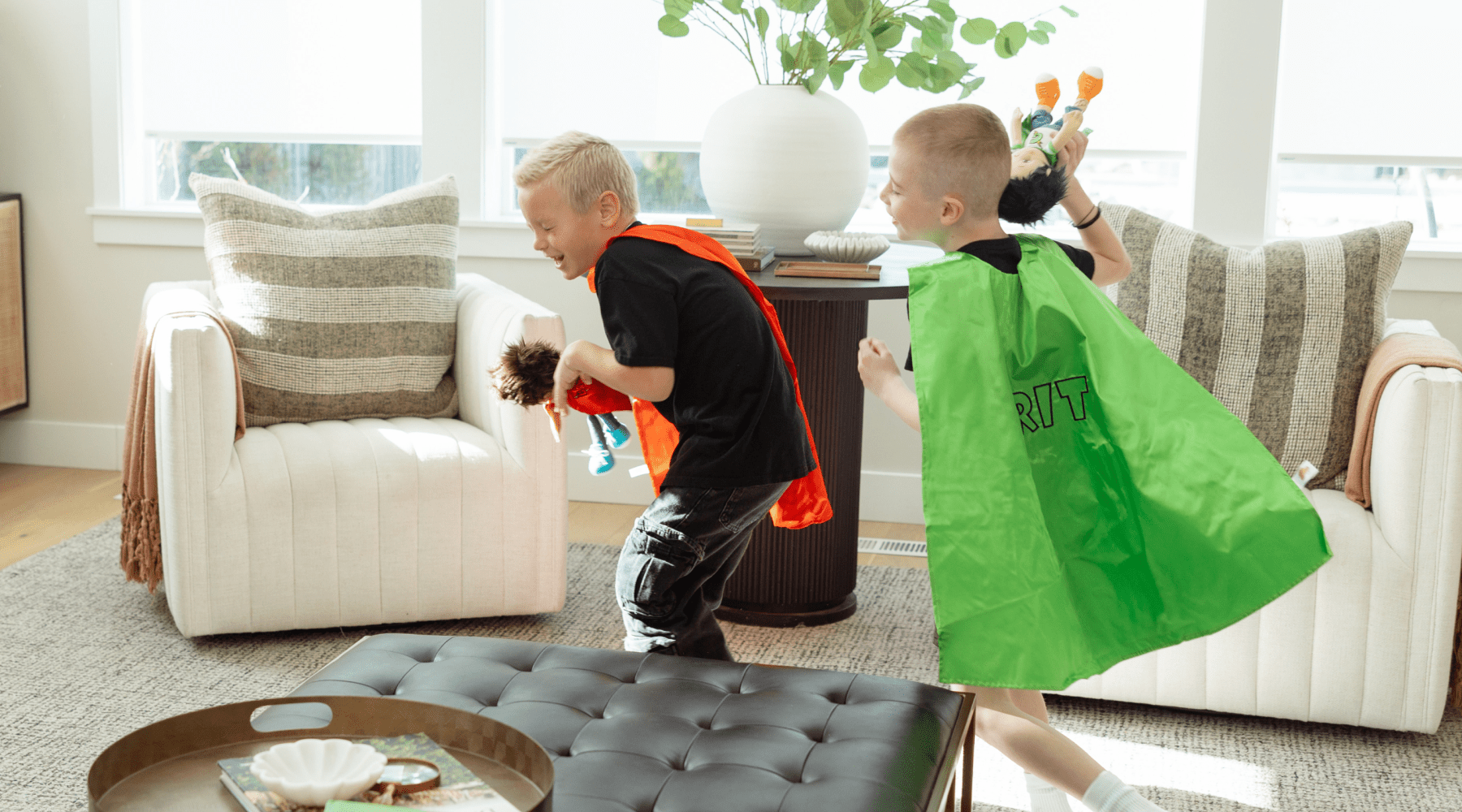By Emily Humphries, OTD
Are your kids getting enough time to play during the day?
It sounds like a silly question, but there’s neuroscience to show why play is so important for kids’ development. As a pediatric occupational therapist, it’s my job to help build routines that support kids to thrive while they grow and learn. One topic I never skip: the importance of play.
While it might seem like play time is just a filler in a child’s day, adequate active play time is actually essential for kids’ ability to learn and regulate their emotions throughout the day. When a child is involved in play that requires coordination, they’re activating the part of their brain that is responsible for impulse control. Without enough time to play, you might notice that big kids have trouble sitting in class, following directions and learning. In little kids, you might notice increased tantrums or other unwanted behaviors, like hitting.
Active play also helps kids develop emotional regulation skills in the long-run. When kids are climbing, sliding and balancing, they’re learning to focus on a goal-directed activity. This helps their brains learn to focus attention and control impulses, which are both important for learning.
Just how much play time do kids’ brains need?
It’s more than you would think. Studies have shown that early elementary schoolers can benefit from as much as THREE HOURS of active play time in a day. Don’t worry, it doesn’t need to be all at once. In fact, the regulation benefits of play are most effective when play time is spread throughout a child’s day, in 10-15 minute spurts.
So what can we do?
-Use transitions as an opportunity for movement
Shifting between activities at home-or in the classroom-is a great opportunity for a wiggle break. Something as simple as a quick video to dance along to, or even taking 5 minutes to master a few yoga poses together, still counts. We can also squeeze in extra sensory input while we move from place to place. Can we hop there? Bear crawl? Crab walk? When kids have to use their brains to coordinate the movement, and when they bear weight in their arms, their brains get regulating sensory input.
-Work movement into what kids are already doing
Making movement a part of learning activities helps kids retain more information. Can we form our bodies into letters while we learn letter sounds? Can we hop in between centers? Can we stomp while we shop for groceries? It sounds silly, and it will absolutely draw the gaze of strangers when you stomp through the grocery aisle. The benefit of having a calmer, more regulated little for the rest of the day makes the sideways glances worth it!
-Set kids up for success
Kids are well-known for “making a scene” in restaurants. To some extent, that comes with the territory of having little kids. BUT there are things we can do to set ourselves up for success before expecting kids to sit for a long time. Firstly, recognizing that movement is very important to kids’ brains! Their temptation to be in motion is based in neuroscience, not in a goal of ruining your dinner. Set aside 20-30 minutes before seated activities, like dinner at a restaurant, to stop at a playground for time to move! You’ll see a more regulated and ready-for-dinner child when you’re done at the playground.
Making sure kids are getting enough movement is just one important way to help kids learn to manage their feelings. Creating a culture in your home that normalizes talking about big feelings is another important strategy, and books are a big part of this. Check out our play guides for tips on how we use play as a tool to teach kids emotional regulation skills.








